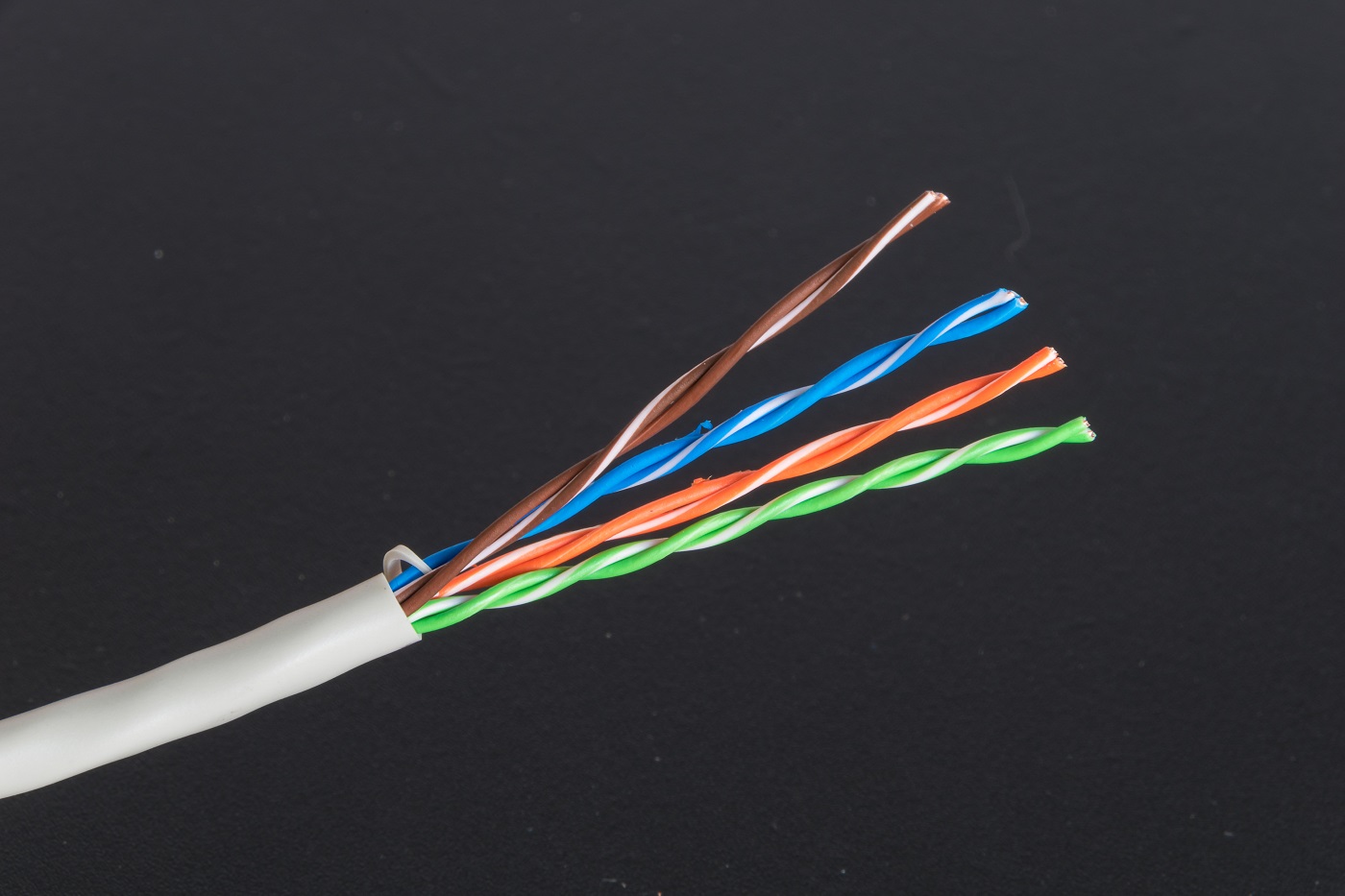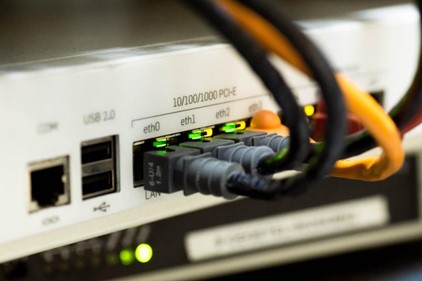
Electrical signals travel over various network paths or media. One such popular and among the oldest network media is the twisted-pair cable. This cable is commonly used for telephone communications and modern Ethernet networks. This blog discusses the nature, uses, categories and types of these cables.
Contents
- 1 What is a twisted pair cable?
- 2 What are the uses of twisted-pair cables?
- 3 LANs
- 4 Ethernet networks
- 5 DSL Lines
- 6 Telephone lines
- 7 Security Camera Systems
- 8 What are the categories of twisted pair cables?
- 9 Here are 2 types of twisted pair cables
- 10 FAQs
- 11 What is the difference between UTP and STP?
- 12 How many wires are in a twisted pair cable?
- 13 What is a CAT6 STP cable?
- 14 What is LAN UTP?
- 15 What is the difference between twisted pair cable and coaxial cable?
- 16 Why is a twisted pair cable better than a coaxial cable?
What is a twisted pair cable?
As the name suggests, a twisted-pair cable consists of pairs of wires that form the circuit to transmit data. The wires are insulated conductors generally made of copper and twisted together. One conductor is used to carry the signal, and the other one is used only as a ground reference.
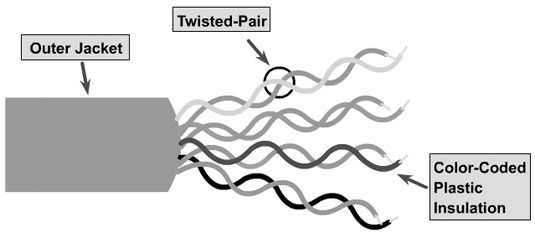
The two parallel conductors have a high degree of crosstalk or noise. The twisted wires significantly reduce the crosstalk in the adjacent pair cables. Let us see how.
A magnetic field is created around a wire whenever an electrical current flows through it. Two similar wires placed closely in an electrical circuit generate equal and opposite magnetic fields. The two magnetic fields cancel or nullify each other as well as any external magnetic fields. Thus, when two wires are twisted, it enhances this cancellation effect and provides self-shielding for the pair of wires.
What are the uses of twisted-pair cables?
LANs
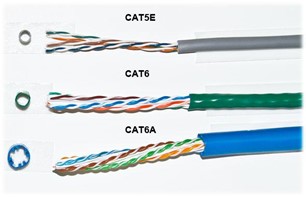
A twisted pair cable is used for connecting computers, switches, routers, printers, IP cameras, and PoE devices in a LAN. They come in various categories: Cat5e, Cat6, Cat6A, and Cat8 cables.
Ethernet networks
Ethernet standard is followed for connecting computers to a local area network. The most common twisted pair ethernet cables used presently are:
- 100BASE-TX or Fast Ethernet (transmission speed 100 Mbps)
- 1000BASE-T or Gigabit Ethernet (1 Gbps speed)
DSL Lines
DSLs or Digital Subscriber Lines are internet connections that use standard telephone lines. They were developed only for voice signals and so are limited in data rate and bandwidth.
Telephone lines
The origin of twisted pair cables dates back to their use in telephone lines.
Security Camera Systems
Security cameras are closed circuit cameras that transfer AV signals to a wireless receiver. IP security cameras use Cat5e ethernet cables.
What are the categories of twisted pair cables?
The EIA has classified the twisted pair cables into seven distinct categories −
- Category 1 or Cat 1 – UTP cables with data rate < 0.1 Mbps, used in telephone lines
- Category 2 or Cat 2 − UTP cables with a data rate of 2 Mbps, used in transmission lines
- Category 3 or Cat 3 − UTP cables with a data rate of 10 Mbps, used in LANs or 10baseT Ethernet
- Category 4 or Cat 4− UTP cables with a data rate of 20 Mbps, used in token ring networks
- Category 5 or Cat 5 – UTP cables with a data rate of 100 Mbps, used in LANs or 100baseT Ethernet
- Category 5e or Cat 5e – 1000baseT Ethernet with a data rate of 1000 Mbps
- Category 6 or Cat 6 − UTP cables with a data rate of 200 Mbps, used in high-speed LANs
- Category 7 or Cat 7 − STP used in super high-speed Gigabit Ethernet.
Here are 2 types of twisted pair cables
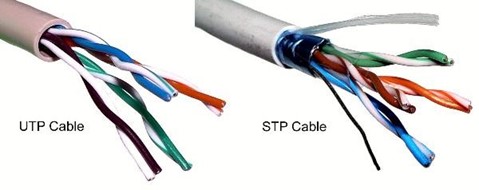
Unshielded twisted pair or UTP: UTP cable has four pairs or eight colour-coded copper wires twisted together and covered with a plastic sheath. Their electromagnetic interference gets cancelled due to the twisting effect. UTP cables are primarily used in LANs, telephone wires and ethernet cables.
Shielded twisted pair or STP: STP cable uses the techniques of wire twisting, shielding, and cancellation. Each wire pair is covered in a metallic foil. Then four pairs of wires are then covered by an external metallic braid. STP cables reduce crosstalk both within the cable with pair-to-pair coupling and from outside the cable.
FAQs
What is the difference between UTP and STP?
UTP and STP are shielded and unshielded twisted pair cables. UTP cables have eight wires twisted together to reduce noise generated by an external source by the cancellation effect. STP cables also have four pairs of twisted pair cables but are enclosed in an additional mesh shield. The shield protects against electromagnetic interference and eliminates crosstalk. UTP cables are cheaper, lighter, and support lower speeds than STP cables.
How many wires are in a twisted pair cable?
Every twisted pair cable has a pair of two insulated copper wires twisted together. In comparison to an untwisted balanced pair or a single wire, a twisted pair cable reduces electromagnetic interference existing in the wire pair and also crosstalk between neighbouring pairs. Alexander Graham Bell gave the concept of twisted pair cables.
What is a CAT6 STP cable?
CAT6 STP cable is a category of STP cables. They are best suited for network cabling in scenarios where there is too much external interference. They have an extra covering above the shielded twisted pair wiring. This protects the transmission medium from any electromagnetic interference occurring inside or outside the cable. The double-shielded structure makes these twisted pair cables in computer networks ideal for fast data rate Ethernets and mobile applications.
What is LAN UTP?
LAN UTP is an unshielded twisted pair cable used frequently in configuring local area networks. It consists of two unshielded wires twisted around each other. UTP cabling comes at a low cost and is extensively used for LANs or local area networks. In comparison to coaxial or fibre optic cables, UTP cabling does not offer a high bandwidth or a good protection from interference. However, it is easy to install and is less expensive.
What is the difference between twisted pair cable and coaxial cable?
While a twisted pair cable includes a pair of twisted copper wires, a coaxial cable has two conductors. The inner conductor is inside the insulator, surrounded by the other conductor that acts as a shield. The outer conductor is covered by a jacket or an insulating protective coating.
A twisted pair cable transmits signals through copper wires. Coaxial cables transmit signals through the inner conductor of the cable. In comparison to twisted pair cables, coaxial cables offer much-refined noise protection and support relatively higher bandwidth.
Why is a twisted pair cable better than a coaxial cable?
Due to less shielding, twisted pair cables are thinner, are less expensive and can be easily installed. Therefore, they are suitable for providing high transmission rates over computer LANs and Ethernets. On the other hand, coaxial cables are better shielded and hence offer better immunity to crosstalk but are relatively costlier than the simple twisted pair cables.

